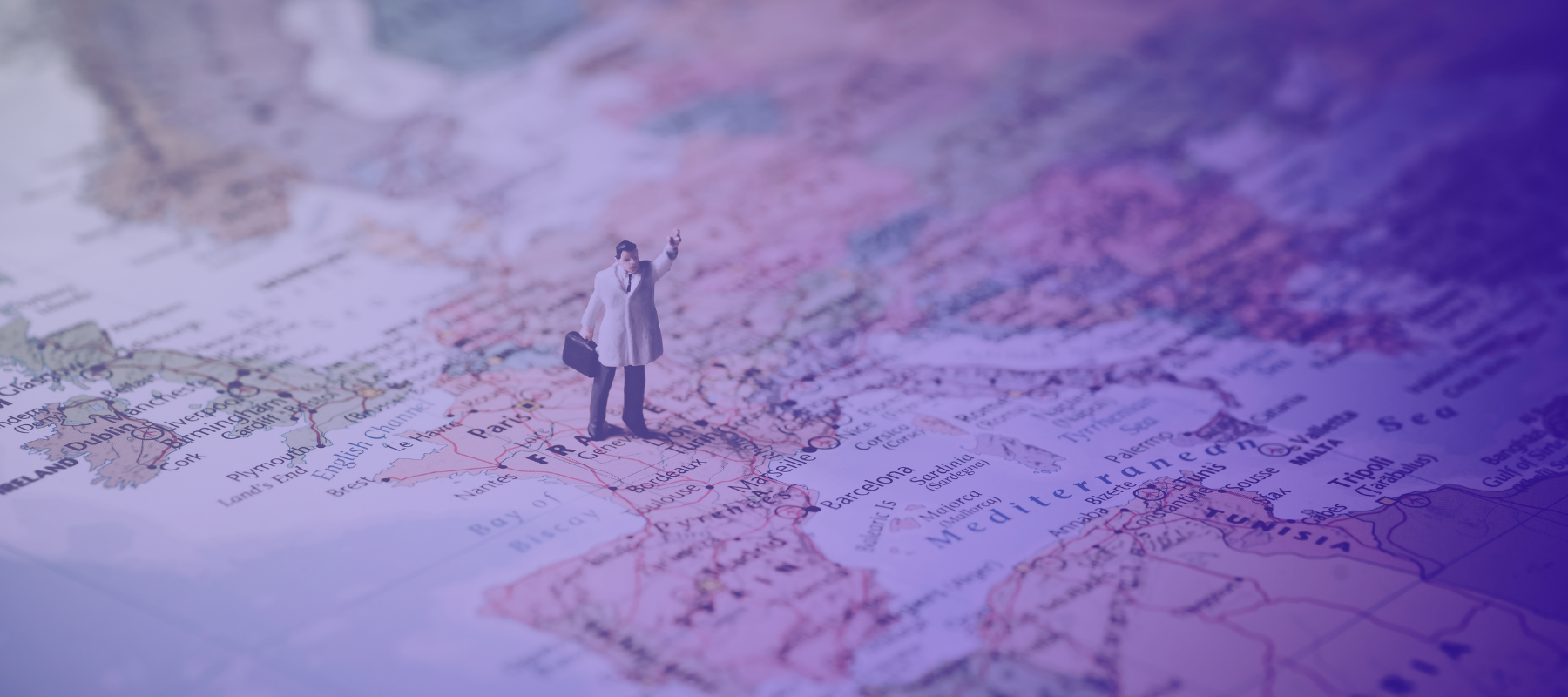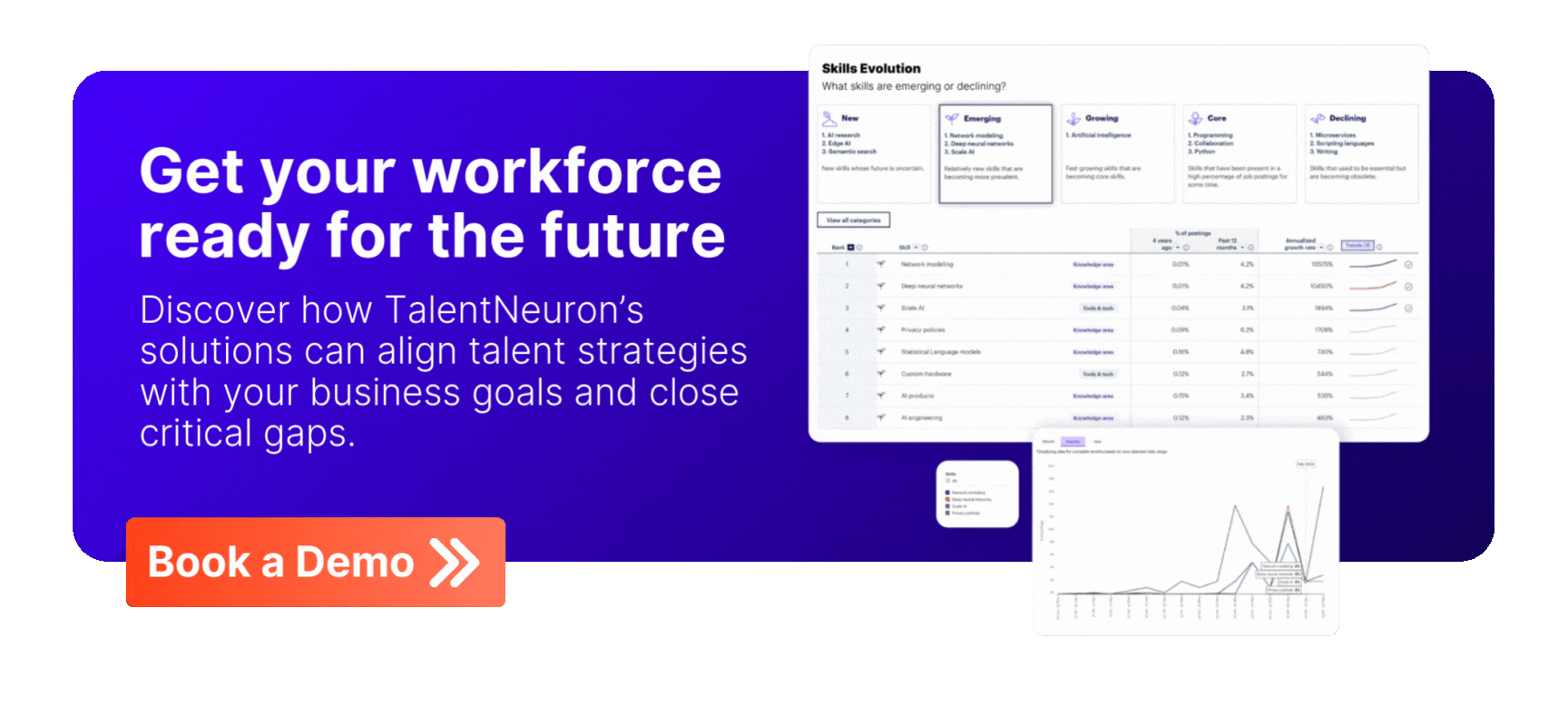Find Business Agility, Resilience with Location Intelligence
.svg)
Find Business Agility, Resilience with Location Intelligence
How global data and insights can help HR teams plan for current and future disruptions

We recently posed a key location strategy question to HR leaders and strategic workforce planners attending our webinar, “Location Strategy: Building Resilience in Volatile Markets.”
We asked: “What factor will most impact your organization’s talent strategy in 2025?”
The top three answers were AI/ML growth, trade tariffs, and global conflict — underscoring the need for adaptable, intelligence-led location strategies. Workforce planning is evolving. AI, climate risks, and shifting regulations require a broader, data-driven lens. To stay resilient and competitive, today’s workforce strategies must integrate external intelligence — not just internal headcounts.

Why Location Intelligence Matters Today
Location analysis isn’t new, but location intelligence is a game-changer. It combines real-time labor data, competitor insights, and macroeconomic trends to turn location from a static choice into a strategic lever. In 2025 and beyond, workforce planning isn’t about where you have offices — it’s about where your talent strategy can thrive.
Location intelligence offers a data-driven approach to understanding:
- Talent availability: Where are skilled professionals concentrated? How is talent migration reshaping these candidate pools?
- Economic viability: What’s the cost of attracting and retaining employees in different regions?
- Competitive landscape: Where are competitors investing or retreating, and why?
- Geopolitical and regulatory risk: Which regions face trade restrictions, conflict, or tightening AI regulations?
Today trade tariffs and geopolitical tensions create uncertainty in supply chains and talent mobility. At the same time, U.S. federal workforce reductions call for more strategic resource allocation. The rise of AI and ML continues to drive transformation, though differing regulatory approaches between the U.S. and E.U. add complexity for multinational companies.
.png)
These shifts require organizations to be more adaptive, using data-driven insights to balance innovation, compliance, and resilience. TalentNeuron’s Location Analysis tool allows organizations to simulate scenarios using sliders for talent supply, cost, and hiring speed — helping prioritize optimal locations dynamically.
What You Need to Know About Location Intelligence
When evaluating new locations, HR looks beyond cost. Metrics include:
- Supply-to-demand ratio
- Time zone compatibility for remote teams
- Graduation pipeline from nearby universities
- Diversity availability
- Hourly wage and corporate tax rates
These are just a few indicators of an optimal location. Other factors can be as granular as proximity to an international airport, housing costs, or access to public transport. All elements are fully customizable based on your organization's specific needs and priorities.
For example, workforce planning managers in shipbuilding have to plan around aging workforces and coastal labor constraints; healthcare organizations face workforce shortages and skill disparities across regions; and energy companies must consider sustainability regulations and proximity to green tech talent to drive location decisions. The ability to model decisions based on different hiring volumes and criteria makes it easier to determine where an organization can scale effectively.
Trade tariffs, global conflicts, and the workforce map
Trade wars and shifting alliances are reshaping the places companies can and should operate. Nearshoring and friendshoring is once again on the agenda for organizations with deep supply chain dependences, with Vietnam, Thailand, Morocco, and Peru emerging as alternative manufacturing centers. HR leaders have to:
- Identify alternative labor markets aligned with strategic priorities
- Forecast costs as tariffs shift production footprints
- Use talent data to help business leaders assess how workforce moves can offset economic risks
For example, a shipping company can use TalentNeuron location intelligence to assess the availability and cost of data scientists and warehouse workers in Hamburg, Germany, and Delhi, India — adjusting its strategies based on supply/demand ratios and hiring feasibility scores.
Location intelligence clarifies where resilience lies — not just in terms of logistics but also in human capital.
AI adoption and the workforce of the future
Organizations must go beyond isolated initiatives and adopt an integrated approach to future-proof their workforces. This includes:
- Conducting AI-impact assessments to forecast which jobs are at risk for changes.
- Developing reskilling strategies to equip employees with in-demand capabilities.
- Mapping global AI talent to locate and compete for top tech skills.
- Monitoring regulations to manage regional differences, such as the strict AI laws in the E.U. compared to the more flexible stance in the U.S.
In response to these challenges, TalentNeuron offers models that help organizations analyze roles and determine how much of each job — sometimes up to 20% — can be automated. These models also identify which tasks are eligible for automation and what new skills employees will need to stay relevant.
Climate change as a workforce factor
Climate change is no longer a distant threat — it directly affects workforce planning. Manufacturing firms evaluating new locations, for example, now factor in:
- Extreme weather disruptions
- Talent availability in low-risk zones
- Sustainability expectations from both employees and investors
Beyond weather resilience, climate-related location planning includes evaluating qualified population density, gender diversity metrics, hourly wage regulations, and corporate tax rates in selected areas. TalentNeuron aggregates this data, helping HR teams simultaneously weigh workforce and environmental risks.
Business leaders started expanding their intelligence gathering beyond traditional talent data. They’re asking broader questions: What are the talent, macroeconomic, and geopolitical trends shaping their key markets? Which emerging regions are rising in their industry? And how are competitors adjusting their global footprints in response? These insights help guide survival as well as strategy.
For HR and workforce planning teams, this means a sharper, more holistic view of location decisions.
- Availability: Talent and skills availability in various markets
- Affordability: Salary costs
- Accessibility: Whether talent is available but in such high demand that hiring remains difficult
A growing list of risks might also include macroeconomic, geopolitical, and climate risks.
HR’s Role in Location-Based Decision-Making
HR is no longer solely focused on managing talent — it now plays a critical role in developing and managing location-based strategies by:
- Providing leadership with location intelligence. This includes supply-to-demand ratios, salary percentiles, and competition saturation scores that show which companies dominate the local market for key roles.
- Aligning location decisions with workforce strategy. Move beyond real estate-driven decisions; workforce and business strategies should evolve in tandem.
- Manage external intelligence for resilient workforce planning. Incorporate insights on labor supply, costs, competition, and macro-level factors such as geopolitical risks.
- Implement automation and AI regulations. Understand how automation impacts roles and how regulatory environments vary across regions.
Using TalentNeuron, HR teams can explore location filters down to specific metropolitan areas and, in some cases, even smaller regional clusters. They can assess graduate talent pipelines from universities and evaluate gender diversity across selected markets.
HR is increasingly expected to deliver data that informs leadership decisions ahead of market shifts. With access to real-time labor market data from millions of job postings worldwide — including employer trends, skill demands, and location insights — organizations can embed workforce intelligence directly into strategic planning.
Future-Proof Your Location Strategy with Continuous, Data-Driven Planning
The best workforce strategies operate as a continuous feedback loop. They combine:
- Market intelligence: Tracking labor trends, competitor moves, and risks.
- Scenario modeling: Simulating trade wars, regulatory changes, and climate disruptions.
- Actionable strategy: Reskilling, location shifting, talent acquisition, etc.
Strategic workforce planning in 2025 is no longer just a numbers game — it’s a multi-dimensional, intelligence-driven effort. HR teams should embrace location intelligence, external data, and predictive insights to stay ahead. With the right tools, HR can be at the forefront — not just reacting to change but anticipating it.





.png)